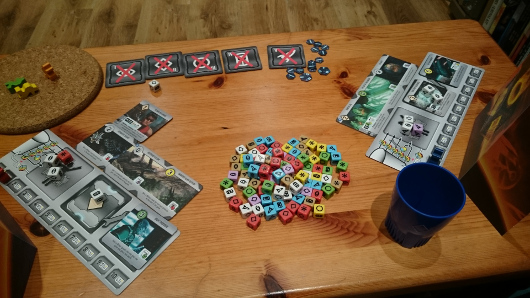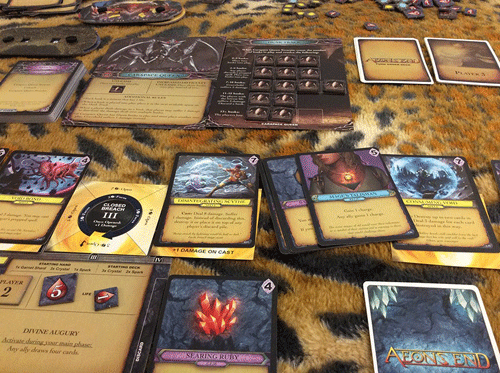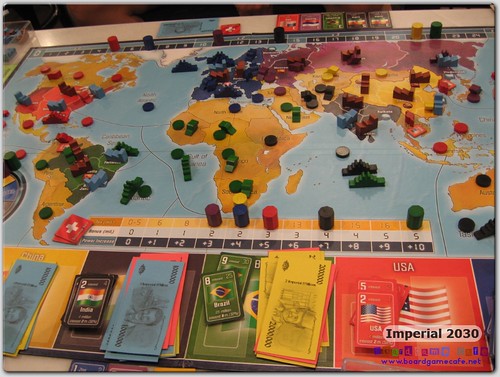Designers: Wei-Hwa Huang, Thomas Lehmann
Explore the Universe! Colonize planets! Build a trade strategy focusing on cheap plastic crap! Roll for the Galaxy is the dice game inspired by Race for the Galaxy and is, in my opinion, a massive improvement on the formula.
Each turn, players roll dice. They can then choose to allocate those dice in ways that lets them explore, colonize, produce and trade with other players. Players can build projects that let them change the rules, or colonize planets they can exploit for resources.
Interesting Mechanics: Roll Activation. The best mechanic in the game is the best mechanic from Race for the Galaxy – while players may have dice set to fire multiple actions (Colonize, Explore, Trade, etc), each player can only guaruntee that one role will fire – i.e. he will declare that Explore will definitely fire. If he has dice set to one of the other actions (such as Trade) that doesn’t fire, then that die ends up wasted. Savvy players therefore will seek to maximize each turn by trying to guess what roles other players will activate, to maximize their turn efficiency.
Roll for the Galaxy is a great, small game that is easy to teach, quick to learn, and involves rolling a metric fuckton of dice. It still leans towards having too much iconography (which is what tortures it’s big brother Race for the Galaxy) but still packs a lot of fun in a small package.

(Photo Credit: Big Red Barrel)







Recent Comments